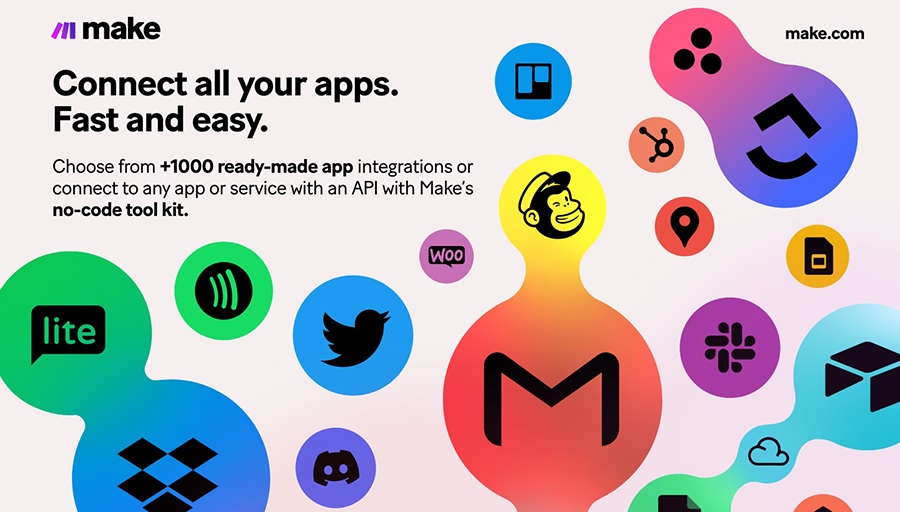
Business operations used to feel like a relay race. Data flowed from one team to another, handoffs caused delays, and by the time a report landed on a manager’s desk, the situation had already changed. AI agents shift that pattern. They watch systems continuously, coordinate tasks across tools, and act on insights in near real time. Instead of waiting for instructions, they take initiative within guardrails that you define. The result is not just faster processes, it is a new way of working where people set direction and agents handle the heavy lifting.
Contents
- What “Reshaping Operations” Really Means
- Core Capabilities That Make Agents Useful
- Where AI Agents Change Day to Day Work
- New Operating Model, Same North Star
- An Implementation Blueprint You Can Reuse
- How to Measure What Matters
- Governance Without the Red Tape
- Common Pitfalls and How to Avoid Them
- What the Next 12 Months Could Look Like
- A Short Checklist to Get Started
What “Reshaping Operations” Really Means
When leaders say AI is transforming operations, they rarely mean a single task that runs a bit faster. They usually mean that several things change at once. Workflows become event driven, decisions move closer to the moment of need, and employees focus on exceptions rather than routine. The changes build on each other, so small upgrades compound into large gains.
From Tasks to Outcomes
Traditional automation checks boxes. It completes steps as written. AI agents aim at outcomes. They evaluate context, choose the next best action, and adapt when conditions shift. For example, a returns processing agent does not just create a ticket. It validates eligibility, triggers a label, updates inventory, and credits the customer when fraud risk is low. One outcome, many coordinated actions.
From Queues to Events
Queues grow when everyone works in batches. Agents respond to events as they happen. A price change, a sensor alert, or a customer message can trigger an agent to investigate, decide, and act. The queue shrinks because the work starts sooner and finishes faster.
From Siloed Tools to Orchestrated Systems
Operations often span a dozen applications. Agents connect them. They pass context across systems so that finance knows what support did, support sees what sales promised, and supply chain has the same view of demand that marketing has. Orchestration replaces swivel chair work with connected steps.
Core Capabilities That Make Agents Useful
Understanding and Reasoning
Agents parse text, logs, and numbers, then form a plan. This is different from hard coded rules. If you ask an agent to resolve low risk refunds up to a threshold, it can gather order history, check shipping status, evaluate fraud signals, and proceed or escalate. The instructions are policy, not line by line scripts.
Action and Integration
Useful agents do more than chat. They connect to your CRM, ERP, ticketing, data warehouse, and messaging tools. With the right permissions, they create records, post updates, launch jobs, and notify stakeholders. Each action is logged so you can audit what happened and why.
Memory and Learning
Agents improve with feedback. They remember prior outcomes, learn from corrections, and adjust plans accordingly. If finance tightens the refund threshold, the agent updates its internal policy, records the change, and applies it consistently without retraining a dozen separate scripts.
Where AI Agents Change Day to Day Work
Customer Operations
Support teams see immediate gains. Agents triage tickets, generate first responses, and resolve common requests like order status, cancellations, and password resets. For complex issues, agents collect facts up front, attach logs, and suggest solutions so human agents start from a clear picture rather than an empty screen.
Revenue Operations
In sales and marketing, agents qualify leads, summarize calls, and keep CRM fields accurate. They draft proposals using the latest pricing, track approvals, and nudge stakeholders who are blocking deals. The lift is twofold, cleaner data for forecasting and more selling time for reps.
Supply Chain and Logistics
Agents monitor stockouts, shipping delays, and vendor performance. When a shipment slips, the agent simulates options, reroutes orders that can still make delivery windows, and informs customers who need to adjust expectations. Every action is tied to service level targets so decisions align with business goals.
Finance and Accounting
Close cycles shorten when agents classify expenses, match transactions, and flag anomalies for review. On the revenue side, agents scan contracts for billing terms, prepare invoices, and reconcile payments. Human reviewers focus on exceptions that require judgment, such as policy deviations or new edge cases.
IT and Security
Agents watch logs for patterns that signal trouble. They open incidents with rich context, roll back risky changes, or isolate systems while alerts are investigated. For routine requests, such as access changes or software installs, agents enforce policy and deliver the result quickly, with approvals captured in the record.
Product and Quality
Product teams use agents to pull signals from tickets, reviews, and telemetry. The agent clusters feedback, estimates impact, and drafts release notes or experiment plans. Quality agents reproduce bugs by following instructions from the thread, attach screenshots, and file issues with consistent steps to reproduce.
New Operating Model, Same North Star
Operations exists to deliver consistent outcomes at a reasonable cost. Agents do not change the goal, they change how you reach it. A practical operating model for agents has four parts, ownership, policy, oversight, and improvement.
Ownership
Each agent needs a business owner who defines success metrics and signs off on scope. If no one owns it, no one improves it. Ownership also clarifies who pauses or updates the agent when policies change.
Policy
Agents rely on clear rules. Refund up to this amount, escalate when fraud risk is above that score, schedule maintenance when error rates cross this threshold. Policies remove ambiguity, reduce variance, and keep actions aligned with risk tolerance.
Oversight
Think of oversight as guardrails, not micromanagement. Use approval steps for high risk actions, sampling for spot checks, and dashboards for transparency. Over time, shift from pre approval to post review as confidence grows.
Improvement
Agents get better when users give feedback. Provide buttons for approve, revise, and escalate. Capture the reason, feed it back into training data, and publish the improvement so teams see progress. Small cycles add up.
An Implementation Blueprint You Can Reuse
Step 1, Pick High Value, Low Risk Work
Look for processes where policy is clear, data is available, and the impact is measurable. Returns, password resets, invoice prep, and status updates are great starting points. Early wins build confidence and free time for tougher challenges.
Step 2, Map the Journey and the Edge Cases
Write the happy path, then list exceptions. For each exception, define the agent’s plan, act if safe, escalate if risky, or request more information. Edge cases are not a nuisance, they are the playbook for safe automation.
Step 3, Connect to Sources of Truth
Agents need the right data, customer records, order status, entitlements, pricing, and policy. Integrate with systems of record rather than spreadsheets that drift. Access should be least privilege, audited, and revocable.
Step 4, Ship a Pilot With Clear Metrics
Run the agent on a subset of volume, track cycle time, accuracy, deflection rate, and user satisfaction. The goal is evidence. If the agent helps, widen the scope. If it struggles, tune the prompts, policies, or integrations, then try again.
Step 5, Scale With Templates and Reuse
Once you have one agent working, templatize the pattern. Reuse connection code, logging, and approval steps. Standard parts reduce maintenance and make audits smoother.
How to Measure What Matters
Operational Metrics
- Cycle time: Minutes from event to resolution.
- First contact resolution: Percent of cases solved without handoff.
- Deflection rate: Share of inbound work resolved by agents.
- Backlog: Tickets or tasks waiting at end of day.
Quality and Risk Metrics
- Accuracy: Share of agent actions accepted without revision.
- Escalation health: Time from agent escalation to human response.
- Policy adherence: Actions within defined thresholds.
- Audit completeness: Actions with traceable rationale and evidence.
Financial Metrics
- Cost per transaction: Labor and compute costs per unit of work.
- Recovery and prevention: Dollars saved by catching errors or fraud.
- Revenue lift: Wins tied to faster cycles or higher conversion.
Governance Without the Red Tape
Smart guardrails keep you fast and safe. A lightweight framework works well, classify actions by risk, require approvals only where needed, and log everything.
Access and Identity
Agents should have their own identities, with scoped permissions. Rotate credentials on a schedule. Use environment segregation so experiments cannot touch production data by accident.
Policy as Code
Store thresholds and rules in a versioned repository. Changes are reviewed, merged, and tracked, just like application code. Auditors love this, and your teams will too.
Human in the Loop, When It Counts
For high value financial actions, irreversible changes, or sensitive data access, require human approval. For routine steps, rely on sampling and anomaly alerts. The mix keeps risk low without slowing every action.
Common Pitfalls and How to Avoid Them
Automating a Broken Process
If a process is messy, an agent will move the mess faster. Clean the workflow first. Remove redundant steps, align ownership, and document policy. Then automate.
Shadow Integrations
Untracked connectors cause surprises during audits. Register every integration, define data flows, and add monitoring. Visibility turns unknown risk into managed risk.
Unclear Success Criteria
Teams sometimes launch agents without a baseline. Measure the before state so you can prove value. The numbers unlock buy in, budget, and momentum.
Underestimating Change Management
Agents shift roles. Communicate early, invite feedback, and provide easy ways to correct or improve agent behavior. When people see their suggestions turn into better outcomes, adoption follows.
What the Next 12 Months Could Look Like
Most organizations will follow a similar arc. Quarter one, a few targeted agents that save hours each week. Quarter two, a shared platform with standard connectors, logging, and approvals. Quarter three, agents handle the bulk of routine tasks in support, finance, and IT. Quarter four, attention shifts to cross functional orchestration, where agents coordinate end to end journeys like order to cash or incident to resolution.
Along the way, the mix of work changes. Teams spend less time on status and updates, more time on decisions that require judgment. Documentation improves because agents rely on clear policies. Audits get easier because every action has a record. Customers feel the difference because responses are timely and consistent.
A Short Checklist to Get Started
- Pick one process with measurable pain, long handle time or error prone steps.
- Write the policy in plain language, include thresholds and exceptions.
- Integrate with systems of record, not shadow spreadsheets.
- Launch to a small audience, gather feedback daily, and iterate.
- Publish results, cycle time, accuracy, and user sentiment.
- Template the pattern and repeat in the next team.
AI agents are not magic, they are diligent coworkers who never stop paying attention. Give them clear goals, access to trustworthy data, and simple guardrails. In return, they will shorten queues, raise quality, and surface insights that used to hide in scattered systems. The biggest win is not the hours saved, it is the shift in focus. People spend more time on the problems that genuinely require human judgment, while agents keep the operational rhythm steady and fast.

